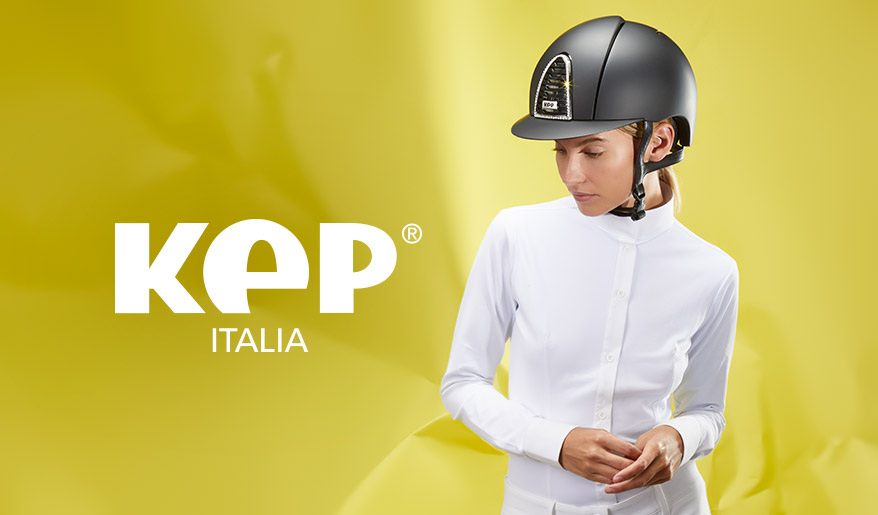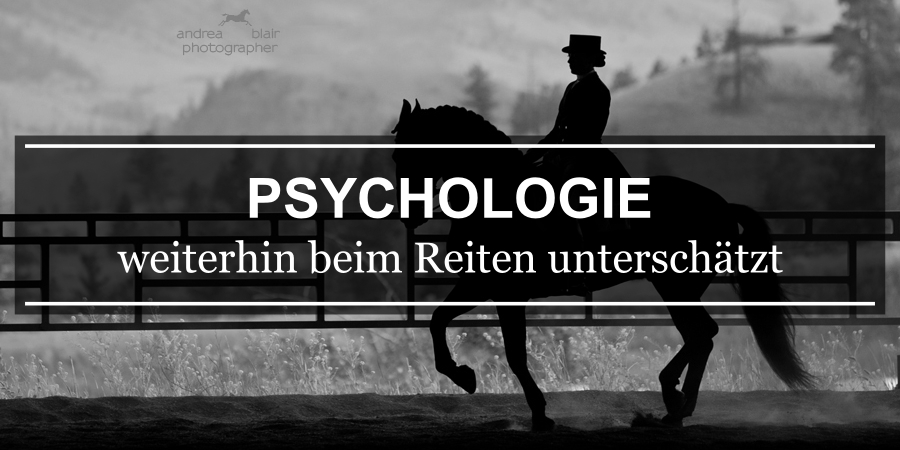
Hintergrundquelle: Foto von Andrea Blair Photographer
Nicht jedem Reiter ist die Bedeutung der Psychologie im Reitsport bewusst. Warum? Weil nur wenige Trainer dies bei der Ausbildung ihrer Schüler erwähnen. Wir lernen die richtige Körperhaltung, wie wir das Tier mit unserem Körper beeinflussen, aber niemand erklärt uns genau, wie das Pferd „funktioniert“. Warum reagiert es so, und nicht anders? Wie nimmt es die Welt um sich herum wahr? Anstatt die bewährten Thesen der Wissenschaft zu verwenden, kommen wir bestenfalls durch die langjährige tägliche Arbeit im Sattel mit unserer Intuition zu ähnlichen Schlussfolgerungen. Nur einer kleinen Gruppe von Reitern gelingt dies jedoch.
In der Welt des Sports ist die Wissenschaft der Motor des Fortschritts. Alle Neuigkeiten über den menschlichen Körper werden von Trainern sofort aufgegriffen und in Trainingsmethoden ihrer Athleten übersetzt. Alles für bessere Ergebnisse. Genauso verhält es sich mit Sportgeräten – oft entscheiden kleine Modifikationen und Verbesserungen über den Erfolg.
Wie sieht es beim Reiten aus? Mit dem letzteren Bereich – der Technologie – gibt es keinen besonderen Unterschied. Jeder versucht möglichst viele technologische Vorteile zu nutzen – neue Gamaschen, Sättel oder Helme, die für mehr Sicherheit sorgen. Ganz anders sieht es jedoch aus, wenn es um die Wissenschaft und Forschung am menschlichen Körper und vor allem um den Pferdekörper geht. Kaum jemand nutzt neue Erkenntnisse, auf deren Grundlage er seine Pläne oder Trainingsmethoden ändert. Wir haben sogar seit mehreren Dutzend Jahren eine kontinuierliche Stagnation. Wir sprechen nicht über die Ernährung oder die Ergebnisse der tierärztlichen Forschung. Niemand nutzt das aus, was uns die Tierpsychologie – die Zoopsychologie – gebracht hat.
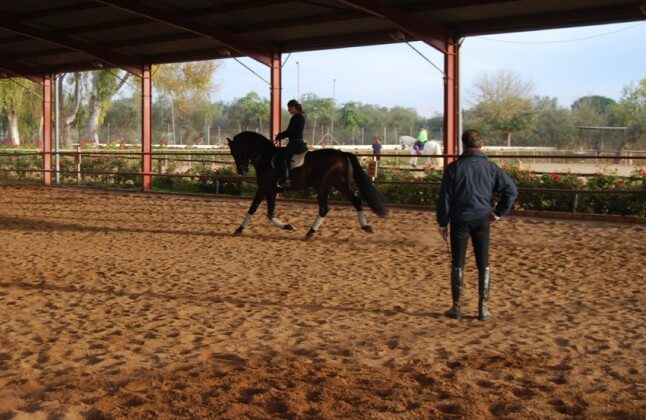
Quelle: equitours.com
Jeder, der sich schon einmal mit Sport beschäftigt hat, weiß, dass das Wichtigste der „Kopf“ des Sportlers ist. Beim Reiten haben wir zwei solcher Köpfe – vom Reiter und vom Pferd. Jeder von ihnen arbeitet anders, nimmt die Welt anders wahr und reagiert auf spezifische Signale. Das Pferd nimmt viel mehr Informationen und Reize aus der Umwelt auf, reagiert viel schneller als wir. Außerdem versucht es nie, das Problem zu verstehen, also rennt es im Notfall immer weg. Erst später, als es an einem sicheren Ort ist, fragt es sich, wovor es wirklich Angst hatte. Wir Menschen können die Zusammenhänge zwischen Ereignissen verstehen und ihre Folgen planen, Pferde leider nicht.
Grundlage ist die Aussage: Damit das Pferd uns versteht, müssen wir zuerst das Pferd verstehen.
Mit solch grundlegendem Wissen sollten wir unser Verhalten analysieren und die angewandten Trainingsmethoden überdenken, insbesondere im Zusammenhang mit "Erziehungsproblemen" mit unserem vierhufigen Partner.
Die Dauer des Reizes
Ein einfaches Beispiel: Ein Pferd schiebt sich beim Putzen mit einem Schritt zur Seite auf uns zu. Was machen wir dann? Wir sind völlig empört, wir reagieren mit einer Handbewegung, einem Klaps auf das Schulterblatt, drücken unsere Unzufriedenheit zusätzlich lautstark aus. Wir denken: "Das Pferd darf nicht die herrschende Hierarchie vergessen und uns so beleidigen!". Ja, der Gedanke ist richtig, aber dies hat nichts mit unserem Verhalten zu tun. Das Tier wird unsere Reaktion überhaupt nicht mit seinem „verwerflichen“ Verhalten in Verbindung bringen. Für ihn wird es eine völlig neue Situation sein, in der der Mensch aus irgendeinem Grund aggressiv reagiert und ihn beschimpft hat. Stellen Sie sich in diesem Fall die Frage: Wo waren wir, als uns das Pferd signalisierte, auf uns zuzugehen? Erst dann sollten wir reagieren, um unser Verhalten für das Tier verständlich zu machen. Reagieren wir zu spät, wenn sich das Pferd längst entschieden und zum Handeln bewegt hat, können wir mit solchen Schlussfolgerungen rechnen: „Der Mensch hat mir erlaubt, sich selbst zu bewegen, dann muss ich ihn nicht respektieren“. Es lohnt sich zu erkennen, dass unsere Handlungen „im Nachhinein“ vom Pferd als eine neue, völlig separate Situation wahrgenommen werden. Das Tier kann den verzögerten Reiz nicht mit etwas kombinieren, das für ihn bereits in der Vergangenheit liegt.

Quelle: horsetricks101.com
Ein ähnliches Beispiel ist auch die Situation, wenn das Pferd beim Reiten ohne unser Kommando beschleunigt. Die Zügel zu ziehen ist auch eine "nachträgliche" Aktion. Wir können uns nicht darauf verlassen, dass unser Tier versteht, dass wir wollen, dass es nicht willkürlich beschleunigt, sondern ein gleichmäßiges Tempo beibehält. Für ein Pferd dauert der „Nachher“-Moment normalerweise Sekundenbruchteile. In dem Moment, in dem das Pferd den Trensendruck gegen das Zahnfleisch spürt, was „langsamer“ bedeutet, erinnert es sich nicht mehr daran, dass es gerade das Tempo geändert hat. Der Reiter ist davon überzeugt, dass er richtig gehandelt hat, und das Pferd hat tatsächlich schon festgestellt: „Ich durfte Gas geben, das heißt, ich kann es jederzeit tun“.
Und tatsächlich wird sich die Situation wiederholen – das Pferd beschleunigt immer öfter, und wir werden es immer aggressiver bremsen. Wir werden frustriert und irritiert sein von der Situation, in der „das Pferd nicht auf uns hört“, und unser vierbeiniger Partner immer mehr davonläuft und nach vorne eilt. Bald nutzen Sie schärfere Gebisse und allerlei Hilfszügel, die uns helfen, das im Maul unempfindliche und blind hetzende Pferd zu „beherrschen“.
Denken Sie daran, dass das Pferd keine Angst hat, mit uns durchzugehen. Das Tier hat nur Angst vor unserer "Nach"-Reaktion. Das einzige, was wir in diesem Fall tun können, ist zu reagieren, wenn das Reittier entscheidet, zu beschleunigen.
Es gibt viele Beispiele dieser Art – bevor das Pferd beschließt, sich in die Mitte des Reitplatzes zu wenden und den Weg in der Nähe des Zauns zu verlassen, teilt es uns immer seine Absichten mit. Wie? Sein Körper „schaut“ wohin es will – das Tier dreht seinen Kopf in Richtung des beabsichtigten Ziels oder auch nur ein Ohr. Wenn wir beginnen, unser Pferd genau zu beobachten, werden wir diese Signale bald verstehen und wahrnehmen, und darüber hinaus werden wir beginnen, sie zu „fühlen“, ohne unseren Sehsinn zu benutzen.
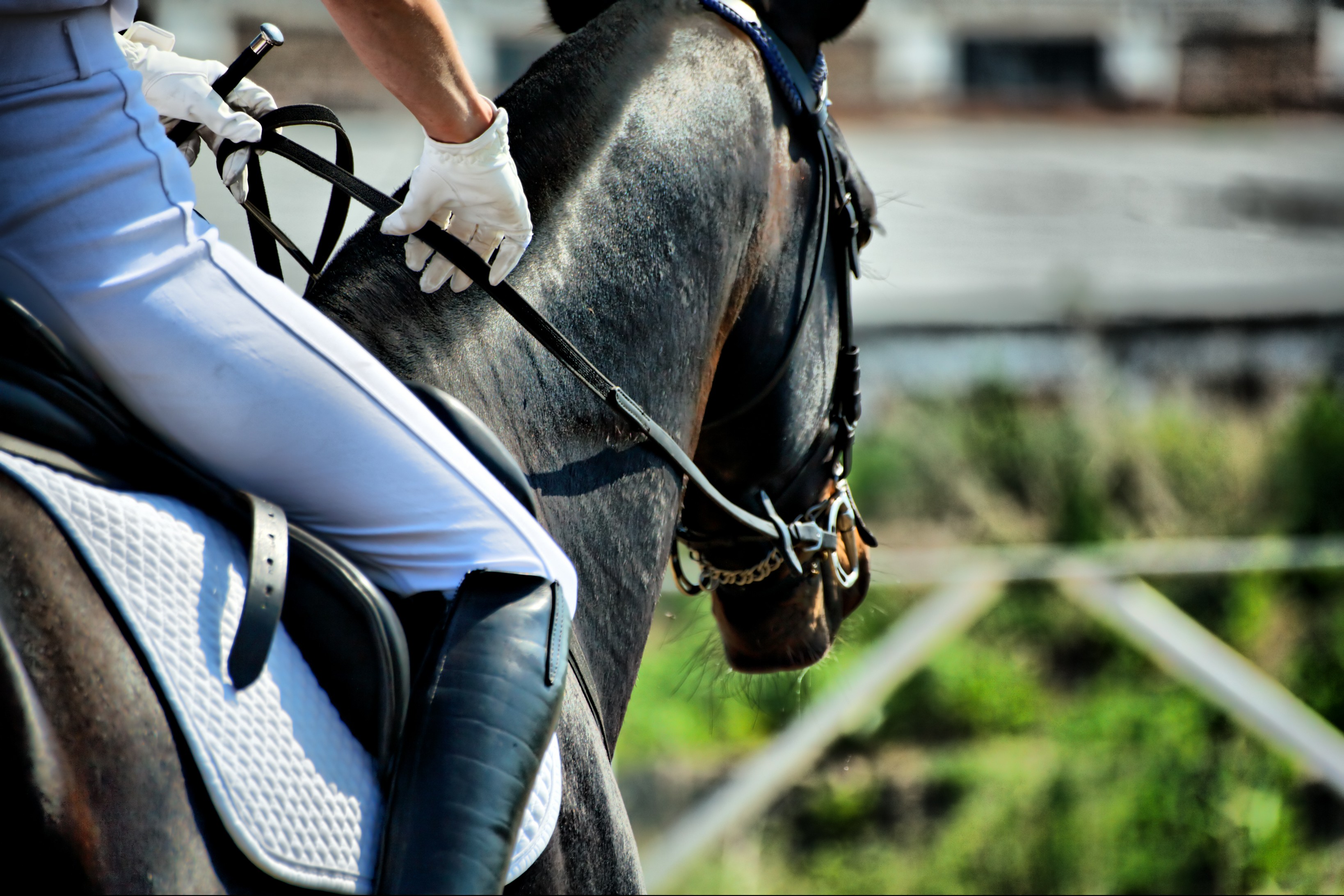
Quelle: shutterstock.com
Wie bekommt man die gewünschte Reaktion?
Das Pferdetraining folgt genau dem gleichen Muster wie das Unterrichten anderer Tiere (z. B. Hunde): Reiz – gewünschte Reaktion – Belohnung. Warum haben wir die Strafe nicht berücksichtigt? Denn Bestrafung ist nie eine gute Motivation für ein Pferd. Denken Sie daran, dass das keine Belohnung eine ausreichende Strafe für das Tier ist.
Wie also sollte eine solche Ausbildung aussehen? Lassen Sie uns etwas ganz Grundlegendes nehmen – dem Pferd beibringen, vom Stand in den Schritt zu gehen. Dies ist die Phase, die jedes Pferd durchlaufen muss, wenn es beginnt, mit einem Reiter auf dem Rücken unter einem Sattel zu arbeiten. Es ist eine der wichtigsten Übungen. Warum? Lassen Sie uns die Situation besprechen, um dies herauszufinden:
Ein junges, völlig unerfahrenes Pferd bleibt höflich stehen. Wir wollen Schritt gehen, also geben wir ihm die Wade. Es sollte kinderleicht sein, aber die meisten von uns machen den gleichen Fehler. Nachdem wir dem Pferd ein klares Signal gegeben haben, warten wir auf eine Reaktion, aber nichts passiert. Dann geben wir die Wade wieder, aber stärker. Das Pferd tut immer noch nichts, es steht immer noch still. Wir hingegen bewegen die Wade etwas nach hinten und setzen wieder mehr Kraft ein, wirken pulsierend. Endlich setzt sich das Pferd in Bewegung. Wir sind froh, dass das Tier verstanden hat, was los ist. Stimmt, das Pferd hat es verstanden, aber nicht ganz so, wie wir es gerne hätten. Unser Tierchen baute folgende Assoziation auf: "Ich warte auf eine wirklich energische und starke Wade, ich kann diese schwächeren Signale ignorieren, weil sie nichts bedeuten." Auf diese Weise erziehen wir ein Pferd für die Zukunft, das unempfindlich gegen Hilfen sein wird und das Reiten auf seinem Rücken nicht angenehm verläuft.
Denken Sie daran, dass das Wadensignal entschieden und kurz sein muss, es nicht unbedingt stark. Besser ist es zu Beginn des Lernens, das Pferd an der Longe an Sprachkommandos zu gewöhnen und in einer solchen Situation gemeinsam mit der Wade ein dem Pferd bekanntes Kommando zu verwenden. Dadurch wird das Tier die Fakten leichter verbinden: Wade = Kommando "marschieren" = im Schritt gehen.

Quelle: pferdiathek.tv
Gleiches gilt für das Bewegen eines trägen oder etwas phlegmatischen Pferdes. Wir legen die Wade an, das Pferd reagiert sofort, bewegt sich aber unserer Meinung nach zu langsam. Wir möchten, dass es sich lebhafter bewegt, also geben wir eine stärkere Wade oder setzen sogar gleichzeitig eine Peitsche ein, wenn das Tier bereits im Schritt geht. Das Pferd bekommt das Zeichen „im Nachhinein“, weil es sich bereits bewegt. Es macht keinen Sinn zu glauben, dass eine Bestrafung bei richtiger Signalreaktion, diese positive Reaktion verstärkt. Der Schritt war die richtige Reaktion, die wir nicht belohnt haben. Wenn es unserer Meinung nach zu langsam war - rechnen Sie nicht damit, dass ein junges Pferd es in der Anfangsphase des Trainings verstehen wird. Wir müssen geduldig sein und unser Tier für die Reaktion loben, um die es gebeten wurde. Das Tier wird verstehen, was wir meinen und wird beruhigt sein, dass seine Reaktion richtig war. Erst wenn das Pferd eine so ausgeprägte Reaktion hat, die wir wollen (Wade = Bewegung), können wir es auffordern, schneller zu gehen, ohne die Wade zu stärken. Wie? Es reicht aus, dass wir, nachdem wir uns von einem Signal mit der Wade bewegt haben, die Wade in Sekundenbruchteilen wieder ansetzen. Es wird ein klares Signal für unser Tier sein, dank dem wir das gewünschte Tempo und die Energie des Gangs erhalten.
Bewegung vom Stillstand in den Schritt scheint eine der einfacheren Übungen zu sein, aber wie das obige Beispiel zeigt, ist es gar nicht. Stellen Sie sich vor, wie viele Fehler wir bei viel komplexeren Aufgaben machen können. Eins der häufigsten Reiterfehler ist die zu lange Übungsdurchführung – zu viele Wiederholungen oder ständige „Schwierigkeit Steigerung“ für das Pferd. Viele von uns wissen nicht, wann sie es ein bisschen lockerer angehen sollten, um die Ausbildung erfolgreich abzuschließen.
Zum Beispiel: Wir bitten ein Reittier, eine Aufgabe zu erledigen. Erst beim vierten Versuch führt das Tier sie richtig aus. Es das fünfte Mal zu tun ist riskant, aber wenn wir die körperlichen Fähigkeiten unseres Pferdes sehr gut kennen, können wir es uns leisten. Die sechste, siebte oder zehnte Wiederholung der Übung hat den gegenteiligen Effekt. Es "festigt" eine positive Reaktion nicht. Wenn das Pferd Energie und Interesse an der Übung verliert, führt es sie auf einem immer weniger zufriedenstellenden Niveau aus. Irgendwann fühlen wir, dass es müde ist und beenden das Training und lassen es ausruhen. Aus physiologischer Sicht – richtig, aber aus psychologischer Sicht – machen wir einen Fehler. Warum? Weil das Pferd eine Belohnung (Ruhe) für die Ausführung einer Aufgabe erhielt, die unter seiner Leistung lag.
Es lohnt sich also, die Übung nach einer korrekt ausgeführten Wiederholung abzubrechen, anstatt sie bis ans Limit zu treiben. Es ist besser, die positive Reaktion Ihres Pferdes innerhalb mehrerer Trainingseinheiten zu festigen, als zu versuchen, etwas in einer Lektion zu erreichen und zu "festigen".
Belohnung des Pferdes
Die Belohnung ist das letzte Element unseres dreistufigen Trainings (Reiz – gewünschte Reaktion – Belohnung). Damit die Belohnung Sinn macht und eine positive Reaktion von unserem Tier hervorruft, muss sie zum richtigen Zeitpunkt erfolgen. Wann? Während der korrekten Ausführung einer Übung oder Aufgabe, nie danach. Die positivste und schnellste Belohnung ist überhaupt kein Klaps oder Kratzen. Am besten ist, indem man einfach die Zügel lockert, eventuell zusätzlich mit der Stimme lobt. Gleichzeitig muss das Pferd, wenn wir die Stimme zusätzlich einsetzen wollen, bereits wissen, dass es sich um eine positive Reaktion handelt – am einfachsten ist es, dies an der Longe zu trainieren.
Wofür braucht das Pferd eine Belohnung? Es stärkt die Kooperationsbereitschaft des Tieres und das Erreichen gemeinsamer Ziele. Es hilft auch, das Ziel jeder Reiteinheit zu erreichen – das Pferd soll den Platz zufrieden verlassen, damit es am nächsten Tag noch bereitwilliger arbeitet.
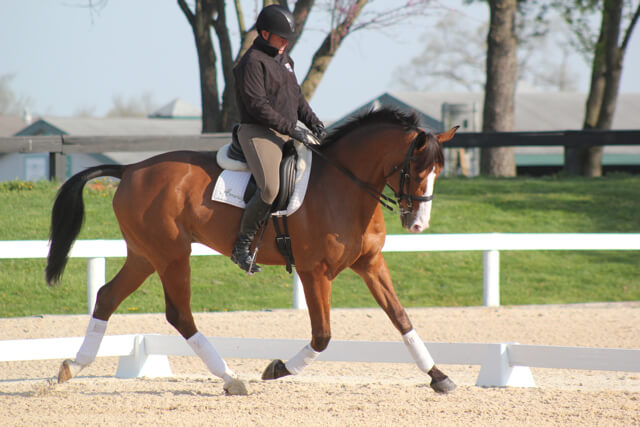
eventingnation.com
Bestrafung des Pferdes
Jeder weiß, dass Gewalt nur ein Zeichen von Schwäche und Hilflosigkeit ist. Wir unterscheiden mehrere Arten von Gewalt, jede von ihnen ist destruktiv für den Trainingsprozess und bringt keine positiven Effekte. Das Pferd versteht die Gewaltstrafe nicht. Das Tier gerät in Panik und versucht der unangenehmen Situation zu entkommen.
Es ist gewalttätig, von einem Pferd mehr zu verlangen, als seine geistige und körperliche Fitness zulässt. Ein häufiger Fehler, der von Reitern gemacht wird, die versuchen, ein unrealistisches Ziel zu erreichen. Beispiel: Morgen kommt ein Käufer, der sich für unser 4-Jähriges Pferd interessiert und wir wollen, dass es sich entsprechend benimmt!
Gewalt ist auch, nicht zu wissen, dass das Pferd nur einen Reiz auf einmal aufnehmen kann. Ein "entsprechender Moment" ist normalerweise eine Hundertstelsekunde für ein Pferd. Es geht darum, die Wade und Zügel nicht gleichzeitig einzusetzen, sondern die Signale separat nacheinander zu übertragen, sogar in Sekundenbruchteilen. Warum? Wenn wir beide Hilfsmittel gleichzeitig verwenden (z. B. die oben erwähnten Zügel und die Wade), wird das Pferd nur das stärkere wählen. Ein stärkeres Signal übertönt immer das schwächere.
Es ist gewalttätig, Hilfsmittel zu verwenden, die stärker als nötig sind. Beispiel: Überbeanspruchung der Peitsche, der Zügel - das Pferd wird dauernd am Maul gezogen, der ständige Einsatz von scharf wirkenden Gebissen, die Nutzung verschiedener Arten von Patenten, ohne zu wissen, wie sie wirklich funktionieren ... Es gibt viele solcher Beispiele. Warum ein Pferd „anbrüllen“, wenn man es „flüstern“ kann? Wir machen es uns selber schwer, mit unserem Reittier zu arbeiten. Wie unser Pferd auf starke Reize reagiert, hängt allein von uns ab. Manchmal vergessen wir, wie empfindlich diese Tiere sind. Wenn Sie es nicht glauben, denken Sie nach: Wie reagiert ein Pferd, wenn sich eine Fliege auf seine Haut setzt? Sogar ein Kind wird antworten, dass es sie mit seinem Schwanz jagen, stampfen oder seine Haut "vibrieren" lassen wird. Wenn es sie wegjagt, muss es sie fühlen, nicht wahr? Der Unterkiefer des Pferdes ist ebenfalls sehr innerviert. Welchen Schmerz muss also ein Reiter verursachen, wenn er sein Pferd bremst, indem er mit beiden Hände auf das Maul wirkt und seinen in den Steigbügeln gehaltenen Körper als Hebel benutzt?
Es besteht keine Chance, dass ein geschlagenes Pferd zum Beispiel denkt: „Ich habe Schmerzen und ich habe schreckliche Angst. Sicherlich, weil ich mich nicht auf den verlängerten Trab vorhin konzentriert habe. Diese Art des Denkens ist absurd und führt zu nichts Gutem.
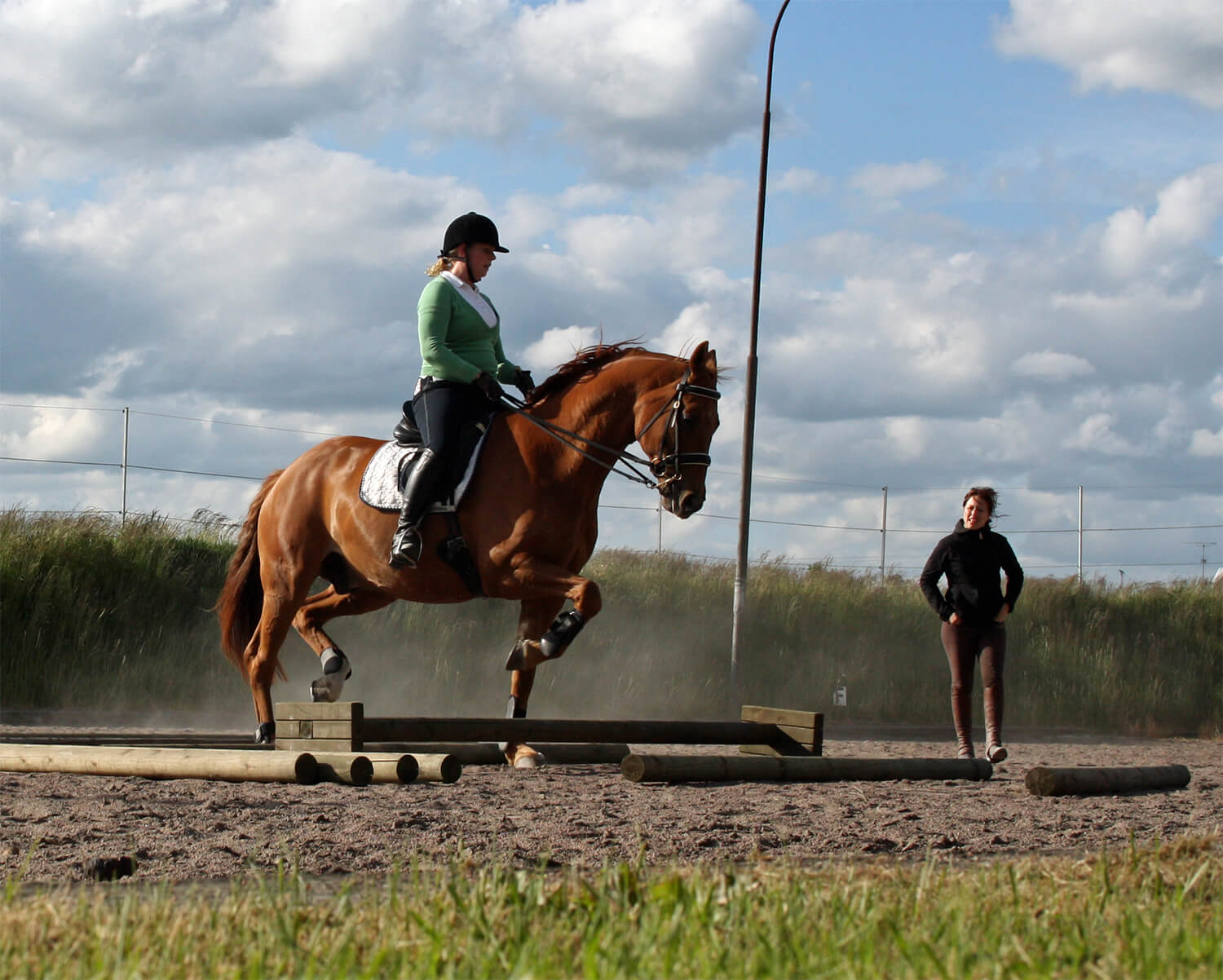
Quelle: charlottewittbom-com
Ganz vermeiden lässt sich Stress im Trainingsprozess jedoch nicht. Stress kann ein positiver Motivator sein und ist für die richtige Entwicklung von Pferden und Menschen unerlässlich. Bei einem Pferd tritt dieser Stress hauptsächlich zum Zeitpunkt der Bestrafung auf. Wie wir bereits festgestellt haben, bedeutet Bestrafung nicht gleich Gewalt. Die beste Strafe für das Pferd ist erst einmal keine Belohnung. Manchmal aber muss das Pferd, damit es den Fehler versteht, unser Handeln als unangenehm empfinden, was für das Pferd gleichbedeutend mit einer Bestrafung ist. Zum Beispiel muss ein leichter Schlag mit der Peitsche überhaupt nicht weh tun, um von einem Pferd gut verstanden zu werden.
Leider wird die Bestrafung, obwohl manchmal notwendig, von den Reitern normalerweise überschätzt. Warum? Denn im Gegensatz zur Belohnung können wir deren Wirkung sofort sehen. Die meisten Reiter erinnern sich nicht daran, dass eine Bestrafung dazu führt, dass die Pferde sich zurückziehen, zu reagieren aufhören oder etwas vermeiden. Bestrafung sollte nur verwendet werden, wenn das Pferd etwas falsch macht, von dem wir nicht wollen, dass es es versucht. Bestrafung wird die Qualität des verlängerten Trabs nicht verbessern, aber sie kann helfen, wenn das Pferd versucht, sich aufzubäumen oder die Richtung zu ändern oder umzukehren. Denken Sie jedoch daran, dass Bestrafung wie Belohnung im richtigen Moment angewendet werden sollte. Bestrafung, wenn das Pferd eine Aktion noch nicht ausgeführt hat, dies aber beabsichtigt – z.B. wir fühlen, dass es sich aufbäumen möchte. Ein leichtes Klopfen mit einer Peitsche und zusätzlich mit der Wade, damit das Pferd schnelleres Tempo bekommt, hilft uns, aus der Pattsituation herauszukommen. Bestrafung, Hilfe oder Belohnung wird niemals "nach" dem Geschehen wirken.
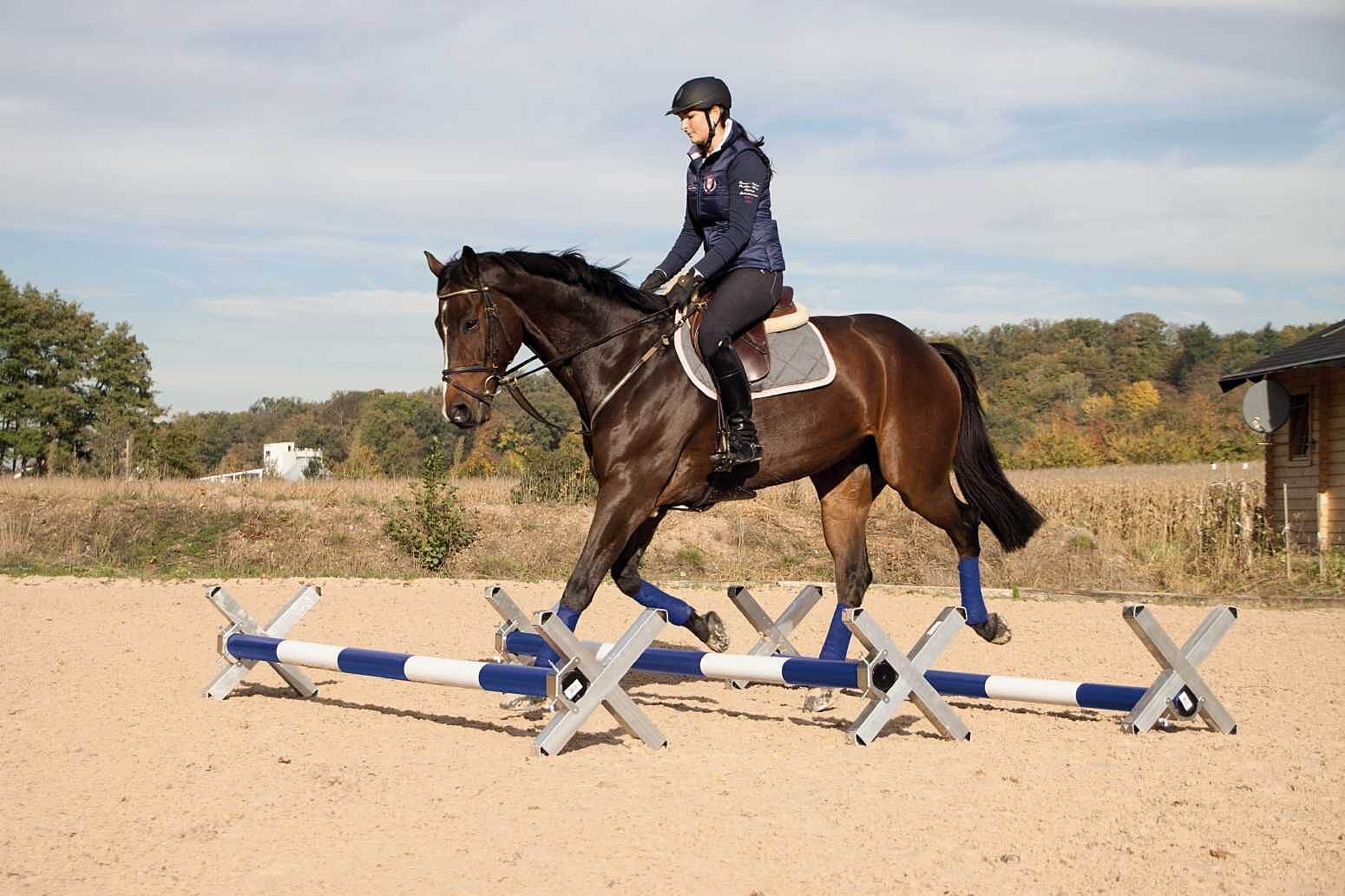
Quelle: kraemer.de
Die meisten der von uns beschriebenen Tatsachen mögen Ihnen offensichtlich erscheinen. Es reicht jedoch ein Blick auf die Trainingsplätze in den Stallungen oder Turnieraufwärmplätze zu werfen, um zu sehen das all diese Aussagen auf einmal fremd für Reiter sind. Je niedriger der Wettbewerbsrang, desto sichtbarer ist dies.
Es lohnt sich, einige der oben genannten Fakten zu berücksichtigen, damit dies die Qualität unserer Kommunikation mit dem Pferd und damit die Qualität unseres Trainings beeinflusst :)




 Quelle: equitours.com
Quelle: equitours.com Quelle: horsetricks101.com
Quelle: horsetricks101.com Quelle: shutterstock.com
Quelle: shutterstock.com Quelle: pferdiathek.tv
Quelle: pferdiathek.tv eventingnation.com
eventingnation.com Quelle: charlottewittbom-com
Quelle: charlottewittbom-com Quelle: kraemer.de
Quelle: kraemer.de

